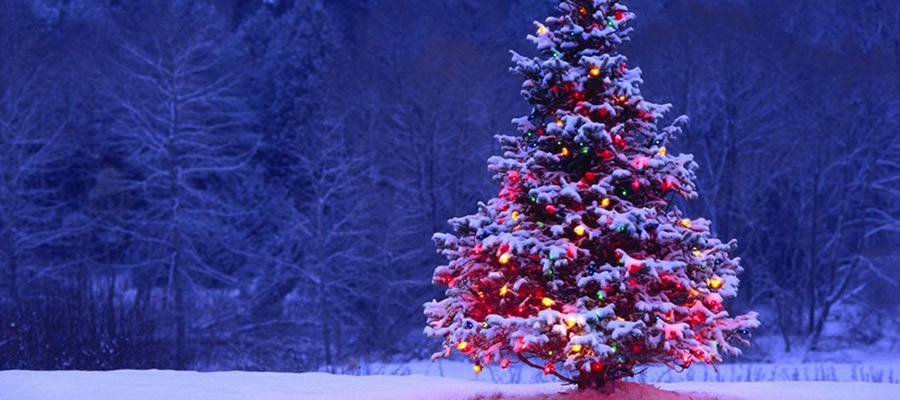While many think that having Christmas trees have always been a Christian tradition, in reality, plants and trees that were evergreen held special meaning for people long before Christianity.
Winter Solstice Celebrations
People before Christian times often decorated their homes for the Winter Solstice (Dec. 21-22) with pine boughs or other garlands of evergreen plants. The Winter Solstice was a festive time of year, being the shortest day and the longest night, for it heralded the return of the Sun. The evergreen plants would be a reminder that summer would return and the other green plants would grow.
Many variations on this theme were found in other lands, such as Ancient Egypt, where they heralded the return of the sun god Ra by filing their homes with green palms, symbolizing the triumph of life over death. Another ancient feast held at the solstice was the feast of Saturnalia, held by the early Romans. The Celts in Northern Europe would also decorate their temples and homes with evergreen boughs.
The Advent of Christmas Trees
The start of the Christmas Tree tradition is usually credited to Germany, in about the 16th century. It is believed that the Martin Luther, father of the Protestant Reformation, first added lights in the form of candles to his holiday tree. He had remembered seeing the stars twinkling among the evergreen trees on a walk one evening, and wished to share the scene with his family by illuminating Christmas trees with candles.
Christmas Trees in America
Though it would seem a common thing today, in the 19th century, Christmas Trees were an oddity. German settlers in Pennsylvania had the first recorded displayed Christmas tree in about 1830. Though these settlements had had trees for at least one hundred years prior, most Americans still saw them as pagan symbols.
One reason for this was that many of the religious people in America saw this as pagan mockery of the observance of Christmas and would penalize any frivolity on the day. The Puritans often preached against many “heathen traditions” such as carols, decorated trees, and other joyful expressions. The court of Massachusetts in 1659 declared that any observance of Christmas other than a church service was illegal, with fines for such things as hanging decorations. This opinion persisted until the 19th century, with the arrival of many German and Irish immigrants.
A Fashionable Trend
When Queen Victoria was sketched in the London News with her family around a Christmas tree, it greatly influenced the fashion-conscious East Coast. By the 1890s there were Christmas ornaments arriving from Germany and having a tree in your home became a popular practice.
Tree decoration began taking on many forms, with most Americans using homemade ornaments, and the German-American style was to decorate with apples and marzipan. Eventually, dyed popcorn with cranberries and nuts came into style.
With the advent of electricity, strings of light-bulbs soon allowed the Christmas tree to glow for days in a safe manner. Christmas trees began to be displayed in town squares all over, and became a true American tradition.




